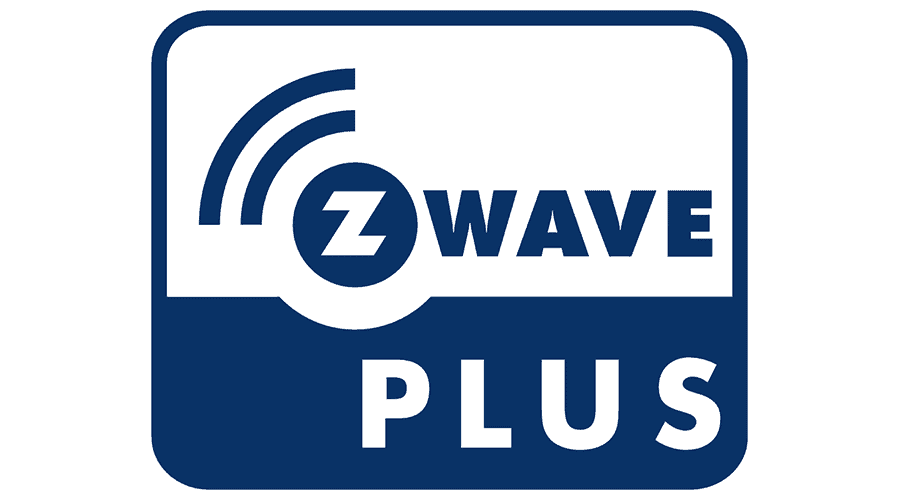As I was thinking about smart home I figured out communication between my smart home devices is the key. To make your house a smart home, you will need communication protocols to make it happen. These communication protocols enable you to communicate between your smart home devices and your smart home control system. Z-Wave remote Control is a must-read area if you want to improve communication in your smart home.
In this article, we will explore what is Z wave, its features, Z wave remote control, and their usage. We will also try to figure out what is Z wave plus.
What is Z-Wave

Z-Wave is a wireless communication protocol. Z-Wave allows smart home devices to communicate with each other. It is designed to meet the need for long-range and low-power communication requirements of smart homes.
Z-Wave allows for wireless control of many smart home devices. Some of these include bright lights, security systems, thermostats, sensors, smart door locks, remotes, and garage door openers.
Features of Z-Wave
- Z wave is an open protocol
- It is interoperable
- Z wave is a sub-GHz wireless communications technology
Z wave has two operating models
- Z-Wave MESH- A reliable sub-GHz MESH
- Z-Wave Long Range – Operates in a STAR topology. It offers over a mile range.
These two modes offer different benefits. MESH for reliability nearby, and Long Range for covering large distances.
Z-Wave operates on low-power radio frequencies. Usually, it operates in the 900MHZ band. However this frequency changes from country to country.
|
Country |
Z wave frequency |
|---|---|
| Australia | 919.8 MHz, 921.4 MHz |
| China | 868.4 MHz |
| Japan | 922.5 MHz, 923.9 MHz, 926.3 MHz |
| Singapore | 920.9 MHz, 921.7 MHz, 923.1 MHz |
| USA |
908.4 MHz, 916 MHz |
See whether your country has Z-Wave RF approved
Z Wave Remote Control

The simplest way to understand the Z wave remote control is by imagining a TV remote. It is simple as that. Z wave remote controllers will provide you with greater flexibility and simplicity. It only requires a tap of a button. The best part is you do not need them to wire. With the Z wave remote control, you can enjoy a reliable and long-range remote control.
With Z-Wave remote control, you can easily control your smart home devices with a simple press of a button. Some of the things you can do include:
Z Wave Remote Control Lights
You can turn on, off, or dim your smart lights remotely with Z wave. So you need not go to the switch to control the lights. You can create different lighting scenes or adjust the brightness levels you wish. For example, you can use touch-intuitive buttons to configure a number of different actions. A single, double, triple click, or holding a button down can change your entire smart lighting.
Z Wave Remote Control Blinds and Shades
You can use Z wave remort controllers o open or close your motorized blinds or shades. You can enjoy the convenience of using them from a distance. Simply you can adjust the amount of sunlight or privacy in your rooms.
Z Wave Remote to Manage Garage Doors
Once you are entering the home you can open our garage door with a Z wave remote. As you enter the garage or leave your home you can close your garage door with a Z wave remote.
Z wave remote provides you with added convenience and security. You can also check the status of your garage door when you’re away from home.
Z Wave Remote to Trigger Multiple Z-Wave Devices
You can use the Z-wave remote to activate multiple Z-Wave devices at the same time. Meaningly by pressing a single button on your Z wave remote you can control multiple smart devices at the same time. For example, you could turn off all lights, lock all doors, and even adjust the thermostat for energy-saving mode when leaving the house.
The Z-Wave remote control simplifies the process of interacting with your smart home devices. Z-Wave remote is a more convenient and user-friendly approach. You can have centralized control over many things in your home. Z-Wave remote control will enhance the comfort, security, and energy efficiency of your smart home space.
Z Wave Remote Switch
Z-Wave remote switch is a smart home device that allows you to remotely manage and control your other Z-Wave-compatible devices in the home. It can be fixed to your wall like a traditional switch. Some of these switches do not need a wired connection and can function with a battery. However, unlike traditional switches, it functions as a handheld remote control. So it will provide you with the convenience of wirelessly operating various smart devices from a single switch.
The Z-Wave remote switch typically uses the Z-Wave communication protocol. This will enable it to communicate with other Z-Wave devices. Some of the classical examples of these are smart lights, smart plugs, smart thermostats, smart locks, and more. You can control these devices without having to physically interact with each one separately.
The remote switch usually comes with multiple buttons or touch-sensitive controls. Each of these is programmed to trigger specific actions or scenes.
By using a Z-Wave remote switch, you can centralize the control of your smart home devices. So it is easier to manage and customize your home automation setup according to your preferences and needs. Z-Wave remote switch offers a convenient and user-friendly way to interact with various smart devices in your home. So it will help you enhance the comfort, energy efficiency, and security of your smart home space.
What is Z Wave Plus?

Z-Wave devices are the first generation products. Z Wave Plus is the later generation of Z-Wave devices. These devices have extra features than Z Wave. They have 400% more memory, 250% faster processors, 50% more energy efficiency and 50% more wireless range.
The extended device communication range provides communication between devices that are 40 feet to around 60 feet. As Z Wave Plus devices are smaller in size they can operate on lesser power. Overall they offer better performance in your smart home space.
You may also have the question of whether Z wave and Zwave plus devices can work together. Both generations of Z-Wave and Z wave Plus devices work together. Even if you have your older Z-Wave controller or hub, it will still work to control the newer Z-Wave Plus products. On the other hand Z wave Plus controllers and hubs can facilitate Z wave devices.
Conclusion
In conclusion, Z-Wave remote control plays an important role in creating a smart home providing seamless communication between smart devices. Z-Wave, as a wireless communication protocol, will allow your smart devices to work together and control remotely. With Z-Wave remote control, managing your smart home becomes more convenient and user-friendly, providing the flexibility of wireless operation.
The Z-Wave remote switch serves many functions. Its handheld remote control capability, allows you to centralize the control of your smart devices. It eliminates the need for multiple switches and provides a simple solution for wirelessly operating various smart devices from a single device. Whether it’s controlling lights, blinds, garage doors, or triggering multiple Z-Wave devices simultaneously, the Z-Wave remote switch enhances comfort, convenience, and energy efficiency in your smart home.
The introduction of Z-Wave Plus represents the next generation of Z-Wave devices with enhanced features, memory, processor speed, energy efficiency, and wireless range. Z-Wave Plus devices offer superior performance, and the compatibility between Z-Wave and Z-Wave Plus devices ensures that both generations can work seamlessly together.
What are your thoughts on smart home technology and Z-Wave remote control? Do you have any experiences or questions you’d like to share? We’d love to hear your insights and engage in a discussion on how smart home technology is transforming our lives. Feel free to leave your comments below.


